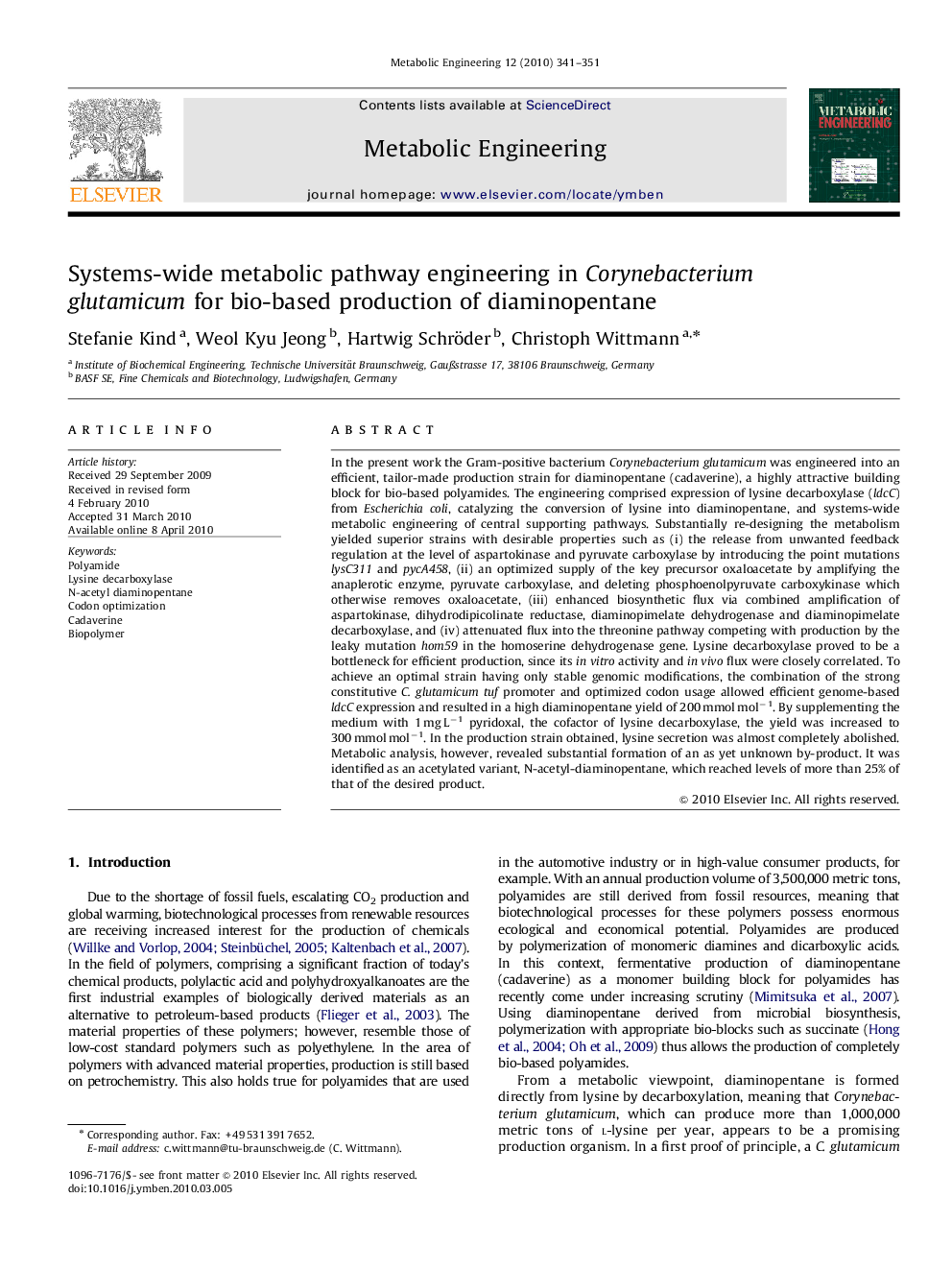| کد مقاله | کد نشریه | سال انتشار | مقاله انگلیسی | نسخه تمام متن |
|---|---|---|---|---|
| 31724 | 44833 | 2010 | 11 صفحه PDF | دانلود رایگان |

In the present work the Gram-positive bacterium Corynebacterium glutamicum was engineered into an efficient, tailor-made production strain for diaminopentane (cadaverine), a highly attractive building block for bio-based polyamides. The engineering comprised expression of lysine decarboxylase (ldcC) from Escherichia coli, catalyzing the conversion of lysine into diaminopentane, and systems-wide metabolic engineering of central supporting pathways. Substantially re-designing the metabolism yielded superior strains with desirable properties such as (i) the release from unwanted feedback regulation at the level of aspartokinase and pyruvate carboxylase by introducing the point mutations lysC311 and pycA458, (ii) an optimized supply of the key precursor oxaloacetate by amplifying the anaplerotic enzyme, pyruvate carboxylase, and deleting phosphoenolpyruvate carboxykinase which otherwise removes oxaloacetate, (iii) enhanced biosynthetic flux via combined amplification of aspartokinase, dihydrodipicolinate reductase, diaminopimelate dehydrogenase and diaminopimelate decarboxylase, and (iv) attenuated flux into the threonine pathway competing with production by the leaky mutation hom59 in the homoserine dehydrogenase gene. Lysine decarboxylase proved to be a bottleneck for efficient production, since its in vitro activity and in vivo flux were closely correlated. To achieve an optimal strain having only stable genomic modifications, the combination of the strong constitutive C. glutamicum tuf promoter and optimized codon usage allowed efficient genome-based ldcC expression and resulted in a high diaminopentane yield of 200 mmol mol−1. By supplementing the medium with 1 mg L−1 pyridoxal, the cofactor of lysine decarboxylase, the yield was increased to 300 mmol mol−1. In the production strain obtained, lysine secretion was almost completely abolished. Metabolic analysis, however, revealed substantial formation of an as yet unknown by-product. It was identified as an acetylated variant, N-acetyl-diaminopentane, which reached levels of more than 25% of that of the desired product.
Journal: Metabolic Engineering - Volume 12, Issue 4, July 2010, Pages 341–351